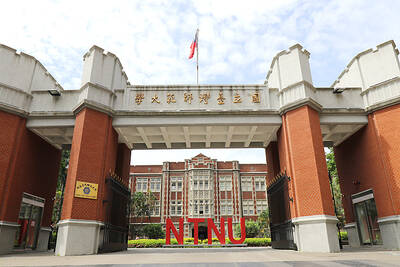The Democratic Progressive Party (DPP) is mulling establishing a task force focused on studying Taiwan entering Trans-Pacific Partnership (TPP) negotations, a party official said yesterday.
If established, the task force may comprise party officials and think tank experts, and would conduct studies on negotiation strategy, policy recommendations and the holding of exchanges with foreign governments, as well as international academics, DPP Department of International Affairs director Liu Shih-chung (劉世忠) said.
The DPP sees joining the proposed free-trade bloc as key for Taiwan’s future and even though President Ma Ying-jeou (馬英九) also supports entering TPP talks and has expressed hope that Taiwan will be a member by 2020, his administration has yet to engage in any preparatory work, Liu said.
The DPP has already reached out to the international community for information on other countries’ assessment and negotiation strategies, said Liu, who recently returned from a trip to Japan.
From Dec. 2 until Thursday last week, Liu’s delegation met with Japanese academics and politicians to learn from the experiences they have gained from Tokyo’s ongoing TPP negotiations, he said.
Liu added that the DPP has established bilateral communications with Taiwan’s informal allies in the Asia-Pacific region, including Japan, South Korea, as well as the US, which the party deems crucial for its success in future elections and for the nation’s diplomatic presence.
Having established a representative office in Washington, the DPP has also started sending delegations to Tokyo every couple of months and to Seoul every six months, he said.
“It is part of our effort to connect Taiwan with the ‘democratic alliance,’ a proposal initiated by DPP Chairman Su Tseng-chang (蘇貞昌) advocating collaboration between Taiwan and other democracies in the Asia-Pacific region, as well as the establishing of a mechanism to affirm that our positions and Taiwanese mainstream public opinion are understood abroad,” Liu said.
Separately yesterday, DPP spokesman Lin Chun-hsien (林俊憲) said the party wants China to promote regional stability and refrain from escalating tensions.
Lin made the remarks in response to Beijing’s criticism of the DPP’s position on China’s new air defense identification zone (ADIZ).
Taiwan Affairs Office spokesperson Fan Liqing (范麗青) said yesterday in Beijing that by accusing China of expansionism, urging collaboration with Japan and the US and protesting the ADIZ, the DPP was trying to incite cross-strait disharmony.

CHANGING LANDSCAPE: Many of the part-time programs for educators were no longer needed, as many teachers obtain a graduate degree before joining the workforce, experts said Taiwanese universities this year canceled 86 programs, Ministry of Education data showed, with educators attributing the closures to the nation’s low birthrate as well as shifting trends. Fifty-three of the shuttered programs were part-time postgraduate degree programs, about 62 percent of the total, the most in the past five years, the data showed. National Taiwan Normal University (NTNU) discontinued the most part-time master’s programs, at 16: chemistry, life science, earth science, physics, fine arts, music, special education, health promotion and health education, educational psychology and counseling, education, design, Chinese as a second language, library and information sciences, mechatronics engineering, history, physical education

The Chinese military has boosted its capability to fight at a high tempo using the element of surprise and new technology, the Ministry of National Defense said in the Quadrennial Defense Review (QDR) published on Monday last week. The ministry highlighted Chinese People’s Liberation Army (PLA) developments showing significant changes in Beijing’s strategy for war on Taiwan. The PLA has made significant headway in building capabilities for all-weather, multi-domain intelligence, surveillance, operational control and a joint air-sea blockade against Taiwan’s lines of communication, it said. The PLA has also improved its capabilities in direct amphibious assault operations aimed at seizing strategically important beaches,

New Taipei City prosecutors have indicted a cram school teacher in Sinjhuang District (新莊) for allegedly soliciting sexual acts from female students under the age of 18 three times in exchange for cash payments. The man, surnamed Su (蘇), committed two offenses in 2023 and one last year, the New Taipei District Prosecutors’ Office said. The office in recent days indicted Su for contraventions of the Child and Youth Sexual Exploitation Prevention Act (兒童及少年性剝削防制條例), which prohibits "engaging in sexual intercourse or lewd acts with a minor over the age of 16, but under the age of 18 in exchange for

The High Prosecutors’ Office yesterday withdrew an appeal against the acquittal of a former bank manager 22 years after his death, marking Taiwan’s first instance of prosecutors rendering posthumous justice to a wrongfully convicted defendant. Chu Ching-en (諸慶恩) — formerly a manager at the Taipei branch of BNP Paribas — was in 1999 accused by Weng Mao-chung (翁茂鍾), then-president of Chia Her Industrial Co, of forging a request for a fixed deposit of US$10 million by I-Hwa Industrial Co, a subsidiary of Chia Her, which was used as collateral. Chu was ruled not guilty in the first trial, but was found guilty